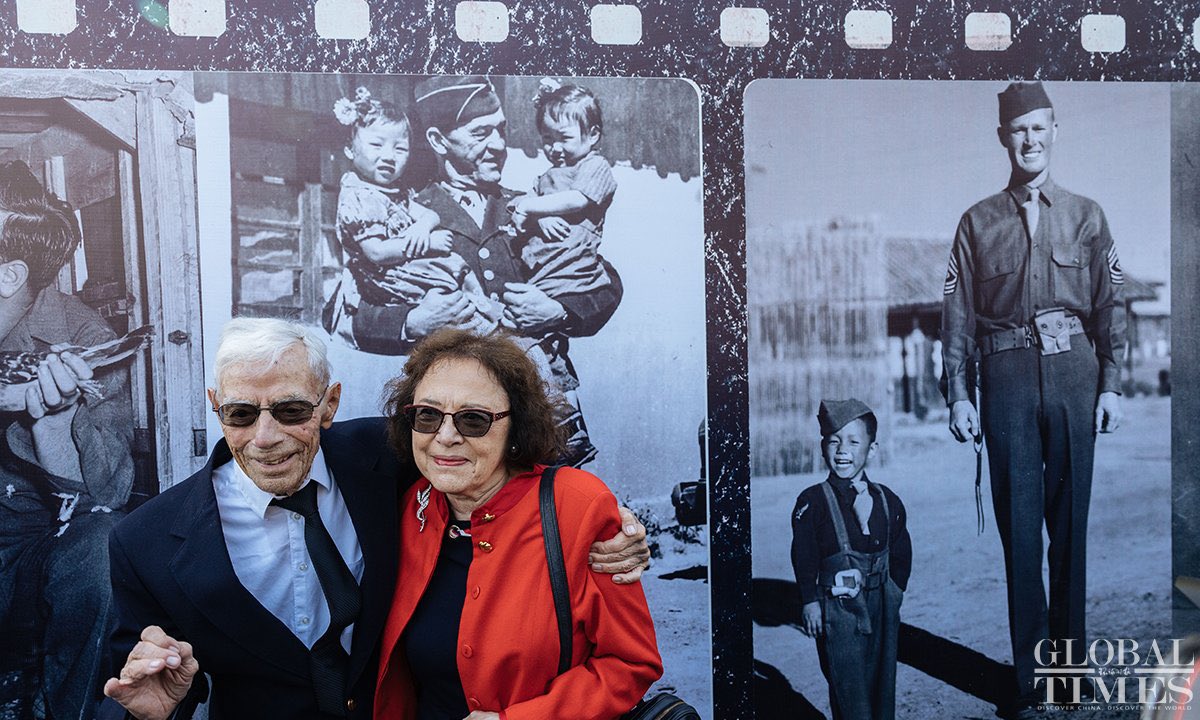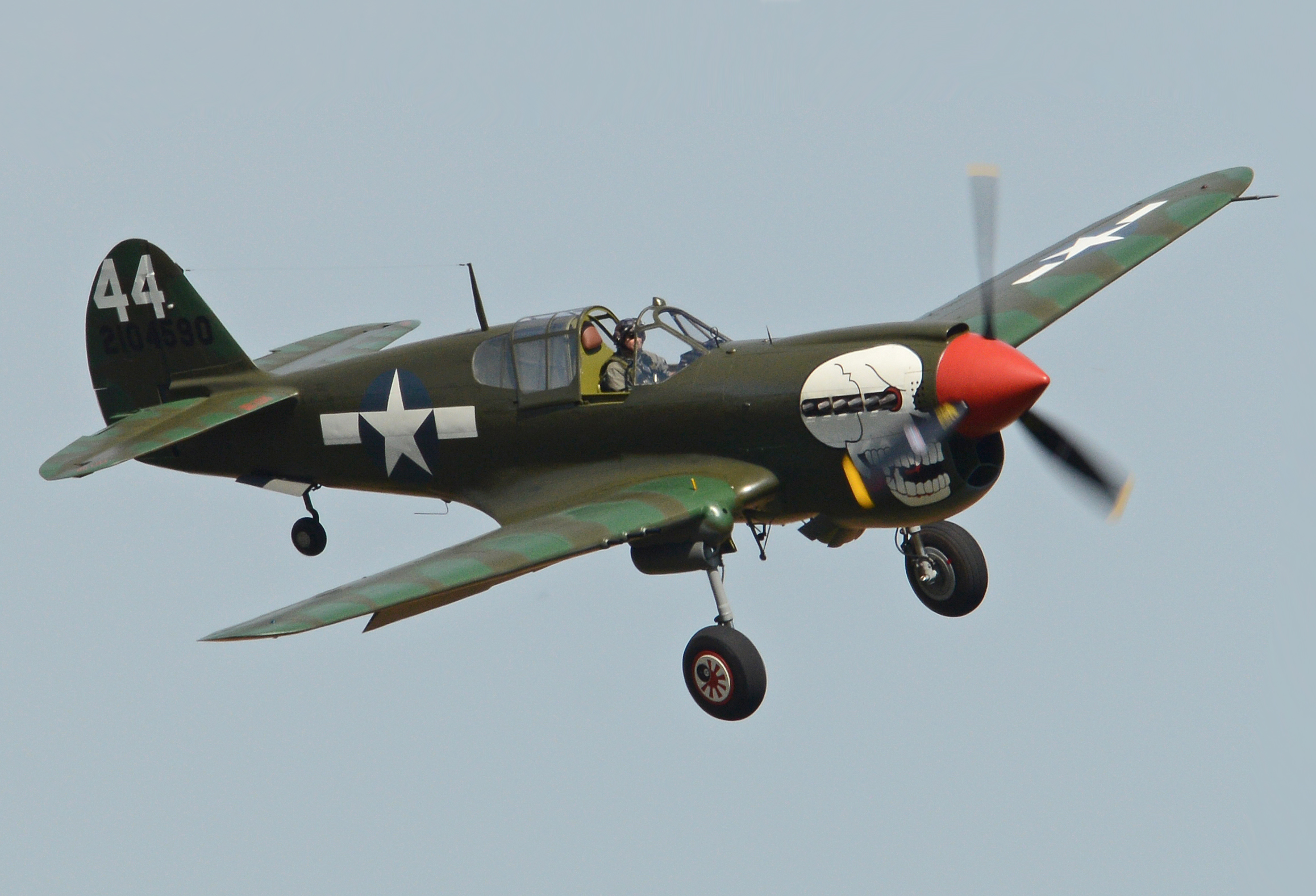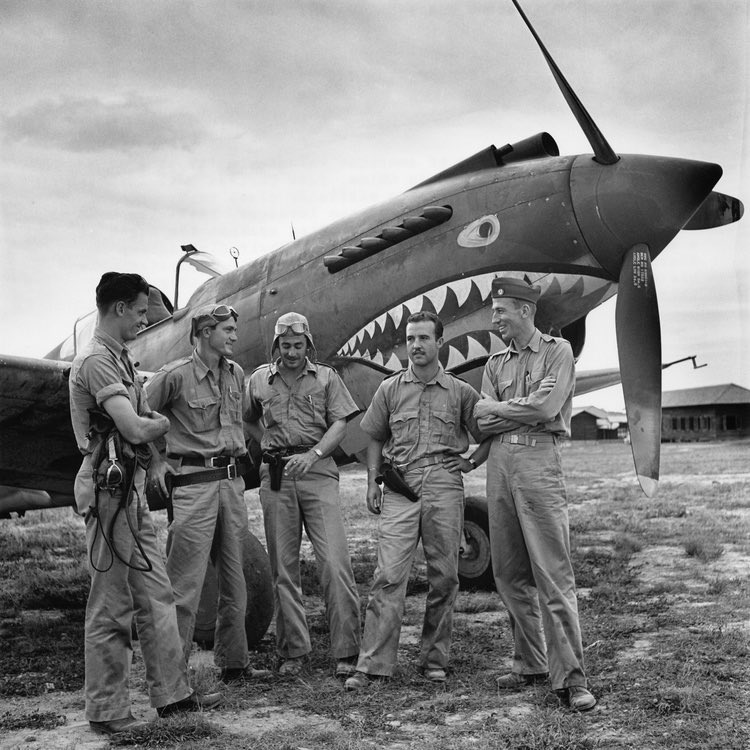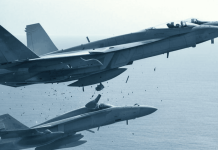China paid tribute to American “Flying Tiger” aircrew members in a ceremony commemorating the conclusion of World War II (WWII) even as the two nations remain at loggerheads amid a rapidly worsening bilateral relationship.
In recent times, the possibility of a conflict between the United States and China in the Indo-Pacific has dominated public discourse due to the escalation in tensions between the two rivals. But, there was a time during the Second World War when the US entered a military alliance with China to defeat Japan, which is now a staunch ally of Washington.
The Flying Tigers, for one, became a huge part of that Sino-American camaraderie. The Flying Tigers, also known as the First American Volunteer Group (AVG) of the Republic of China Air Force, were established to help thwart the Japanese invasion of China. It operated from 1941 to 1942 and consisted of pilots from the US Army Air Corps (USAAC), US Navy (USN), and US Marine Corps (USMC).
Despite the passage of several decades and significant changes in regional alliances that have brought the United States and China face-to-face, Beijing regularly pays homage to the slain American Flying Tiger troops. This year, the names of almost 2,500 soldiers who fought the Japanese on China’s side were made public for the first time.
Speaking at the ceremony which was held in Nanjing, in the Jiangsu region of eastern China on September 3, the Chinese ambassador to the United States, Xie Feng, said that the Flying Tiger spirit “will forever be a great treasure.”
https://twitter.com/XH_Lee23/status/1831301467673866751
“During China’s greatest hour of need in the war against Japanese aggression, a batch of US air personnel traveled thousands of miles without regard for their own lives … to fight with the Chinese army and people, to fight for peace,” Xie added.
He spoke via video link at the inaugural ceremony of ‘Remember the Heroes—Historical Photo Tour of the Flying Tigers (Nanjing)’, held in the Nanjing Anti-Japanese Aviation Martyrs Memorial Hall in Jiangsu province, East China. The exhibition features 180 photographs and 100 artifacts, including the medals that Flying Tigers Commander General Chennault wore.
Ambassador Xie Feng expressed his hope that “more Flying Tigers members of the new generation” will share their stories of cooperation and camaraderie.
While analysts conjecture that China and the United States could likely go to war in the Indo-Pacific over Chinese adventurism against Taiwan and the Philippines, Beijing has continued to pay homage to the Flying Tigers annually. Some experts suggest that this is an effort to strengthen people-to-people ties amid the escalation in tensions.
Last year, for instance, China hosted the surviving veterans of the Flying Tigers, an event attended by Chinese Vice President Han Zheng, who emphasized the importance of drawing lessons from history to mend the currently tense relations.
The state-run Global Times publication also reported on Chinese President Xi Jinping writing letters to the veterans.

Similarly, in 2022, the Chinese envoy to Washington, Qin Gang, attended the Flying Tigers’ 80th anniversary while sporting a jacket that two veterans had sent for him.
In the recent ceremony, Xie emphasized that President Xi Jinping praised the Flying Tigers’ historical achievements in China’s War of Resistance Against Japanese Aggression (1931–1945) and the close friendship that has developed between the people of the two countries. The ambassador also stated that China is still assisting in the search for the remains of US service members who aided China.
“We welcome the Flying Tigers veterans to come back to China often and jointly support the “Flying Tigers Friendship School and Youth Leaders Program” and President Xi’s initiative of inviting 50,000 young Americans to China on exchange and study programs in the next five years. We expect more similar events to be held in the United States as well, to tell the story of the Flying Tigers to the public, and continue enhancing exchanges between our two peoples and deepening our time-honored friendship,” he noted.
The American Flying Tigers That Fought For China
The war between Japan and China began in July 1937 with a full-scale invasion of the entire Chinese state. The Japanese overran Nanjing and carried out the Nanjing Massacre.
The Nationalist administration moved to Chongqing in the interior of China in 1938 after failing to prevent the Japanese occupation of Wuhan, which at the time was the de facto capital of China.
Soviet aid following the Sino-Soviet Non-Aggression Pact initially strengthened the Republic of China Army and Air Force. Moreover, with Japan’s communications networks extending well into the country’s interior and Chinese campaign victories by 1939, the conflict reached a stalemate.
China’s Plan To Exploit ‘NATO Loophole’ In Svalbard Busted; Arctic Region Becomes Hotbed Of Rivalry
While Japan was unable to defeat the Chinese forces, it declared war on the United States after attacking Pearl Harbor in December 1941. In a bid to weaken and defeat the Japanese empire, the US now expanded its financial and military assistance to China, turning it into its principal backer.
This is how the Flying Tigers were born.
Claire L. Chennault, a retired U.S. Army Air Corps officer who had worked in China since August 1937, was largely responsible for establishing the American Volunteer Group. Chennault first served as Chiang Kai-shek’s military aviation advisor during the early stages of the Sino-Japanese War and then as the director of a Chinese Air Force flight school located in Kunming.

For a long time, China received fighter and bomber squadrons, besides support forces from the Soviet Union. However, by the summer of 1940, most of the support forces had been removed. Now, China’s Soviet-supported air power has declined. The Chiang Kai-shek government believed that they had 500 aircraft to deter the Japanese, but Chennault informed him that while China did have 500 aircraft, only 91 of them could fly.
Following this, Chiang requested American combat planes and pilots, sending Chennault to Washington to serve as China’s ambassador-advisor.
The United States was not formally involved in World War II at the time. However, President Franklin Delano Roosevelt expressed anxiety over the possibility that Japan would overthrow China and target the United States.
After returning to the United States, Chennault made every effort to secure planes. Chiang’s brother-in-law, T.V. Soong, a Chinese official, helped broker an agreement allowing China to purchase one hundred Curtiss P-40 fighter planes manufactured in the United States.

President Franklin D. Roosevelt gave Chennault approval to enlist roughly 200 support personnel and 100 American pilots for the Flying Tigers program in 1941.
Originally the First American Volunteer Group, the Flying Tigers was established in 1941 and joined the 14th Air Force in 1943. They fought the Japanese government while also ensuring that supplies could be safely transported from British India to the southwestern areas of China, which functioned as the headquarters for the resistance government.
While this air combat lasted just about seven months, the Flying Tigers gained prominence for their ability to inflict disproportionate damage on Japan’s bigger and better-equipped aircraft fleet. These victories came when the Japanese appeared to be indomitable.

In their first combat over the Chinese city of Kunming on December 20, 1941, the Flying Tigers knocked down nine out of ten Japanese bombers, less than two weeks after Japan’s attack on Pearl Harbor forced the United States to declare war.
More than 2,000 American volunteer airmen lost their lives in these sorties throughout the war, according to official Chinese broadcaster CCTV.
The airmen shot down over 2,600 Japanese aircraft. Chinese citizens demonstrated their commitment to the community by engaging in rescue efforts, successfully saving more than 200 people, and creating temporary escape pathways.
When pilots were downed, the Chinese populace experienced significant hardship in their efforts to assist. To locate the Flying Tigers, the Japanese would enter these communities and torture, mutilate, and kill the locals. Rather than betraying the Flying Tigers to the Japanese invaders, the Chinese populace opted to endure the repercussions of their silence and complicity.
This episode is entrenched as a rare period of bonhomie and cooperation between China and the United States, the two global superpowers that have become adversaries now.
- Contact the author at sakshi.tiwari9555 (at) gmail.com
- Follow EurAsian Times on Google News




